Tribe Marmotini Scientific name Tamias striatus Rank Species | Phylum Chordata Family Sciuridae Genus Tamias Lifespan 3 years (In the wild) Higher classification Chipmunk | |
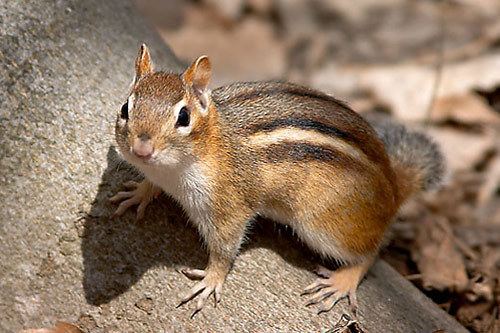 | ||
Similar Chipmunk, Squirrel, Mammal, Rodent, Least chipmunk | ||
Eastern chipmunk films nature web tv
The eastern chipmunk (Tamias striatus) is a chipmunk species found in eastern North America. It is the sole living member of the chipmunk subgenus Tamias, sometimes recognised as a separate genus. The name "chipmunk" comes from the Ottawa word ajidamoonh or the Ojibwe word ajidamoo, which translates literally as "one who descends trees headlong."
Contents
- Eastern chipmunk films nature web tv
- Eastern chipmunk comes out of hibernation
- Description
- Habitat
- Behavior
- Diet
- Lifecycle
- References
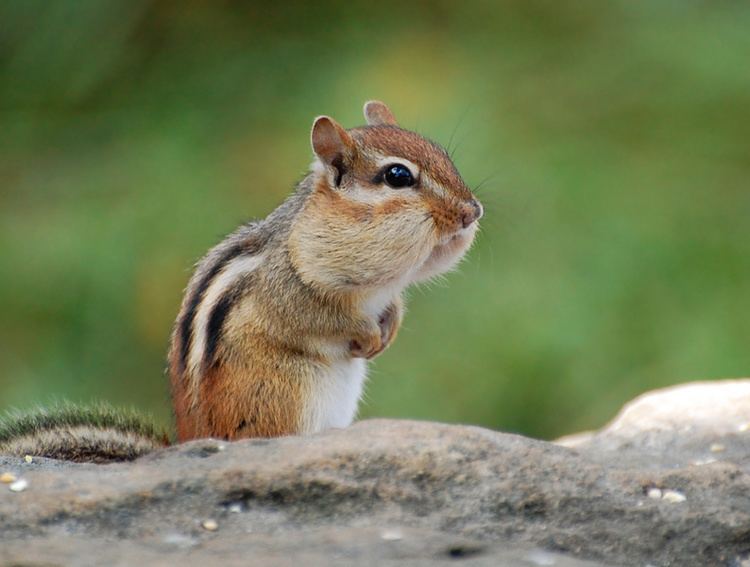
Eastern chipmunk comes out of hibernation
Description

A small species, it reaches about 30 cm (12 in) in length including the tail, and a weight of 66–150 g (2.3–5.3 oz). It has reddish-brown fur on its upper body and five dark brown stripes contrasting with light brown stripes along its back, ending in a dark tail. It has lighter fur on the lower part of its body. It has a tawny stripe that runs from its whiskers to below its ears, and light stripes over its eyes. It has two fewer teeth than other chipmunks and four toes each on the front legs, but five on the hind legs.
Habitat
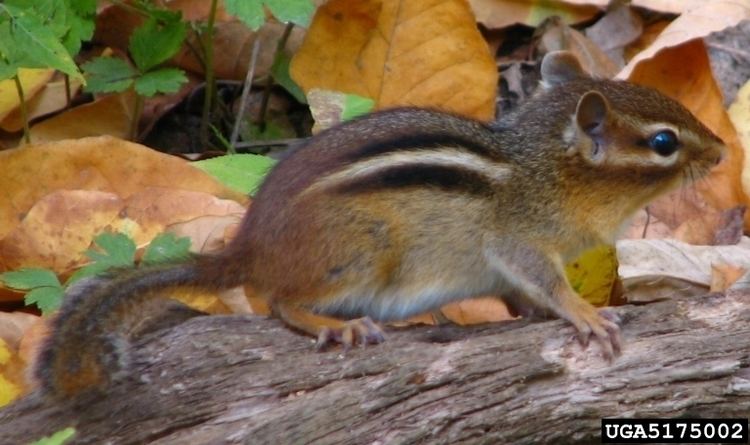
The eastern chipmunk lives in deciduous wooded areas and urban parks throughout the eastern United States and southern Canada. It prefers locations with rocky areas, brush or log piles, and shrubs to provide cover.
Behavior

It can climb trees well, but constructs underground nests with extensive tunnel systems, often with several entrances. To hide the construction of its burrow, the eastern chipmunk carries soil to a different location in its cheek pouches. It also lines the burrow with leaves, rocks, sticks, and other material, making it even harder to see. It has several bird-like or chattering calls; one is a trill at the rate of 130 vibrations per minute and another is a lower-pitched, clicking sound.
Diet
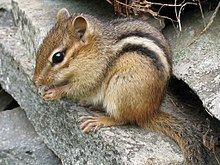
It is mainly active during the day, spending most of its day foraging. It prefers bulbs, seeds, fruits, nuts, green plants, mushrooms, insects, worms, and bird eggs. Like other chipmunks, it transports food in pouches in its cheeks.
Lifecycle
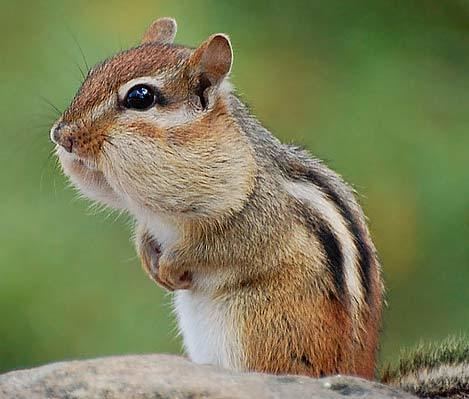
The eastern chipmunk defends its burrow and lives a solitary life, except during mating season. Females usually produce one or two litters of three to five young. The two breeding seasons are from February to April and from June to August. During the winter, the chipmunk may enter long periods of torpor, but does not truly hibernate.

Predators of the eastern chipmunk include hawks, foxes, raccoons, weasels, snakes, bobcats, lynx, and domestic cats. On average, eastern chipmunks live three or more years in the wild, but in captivity they may live as long as eight years.
